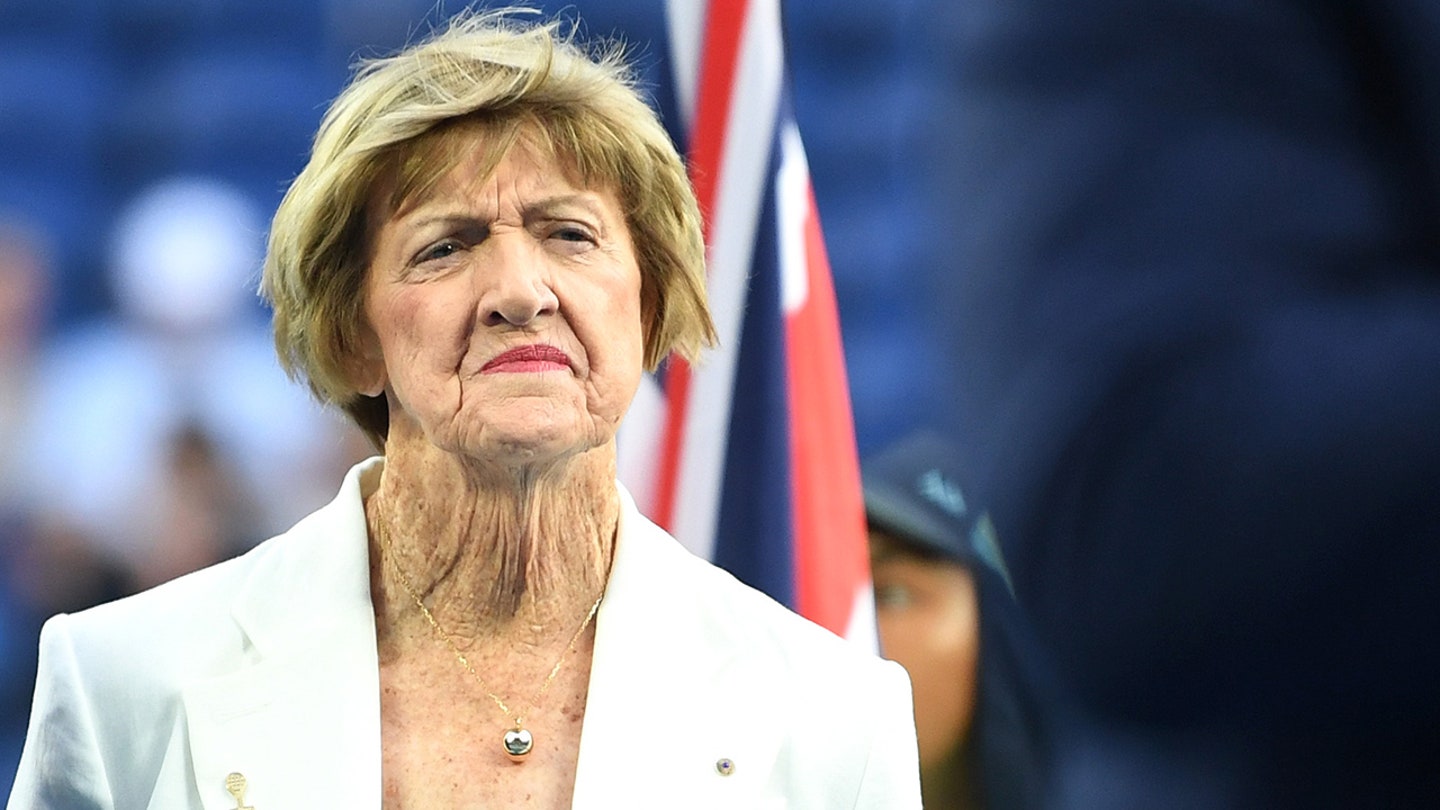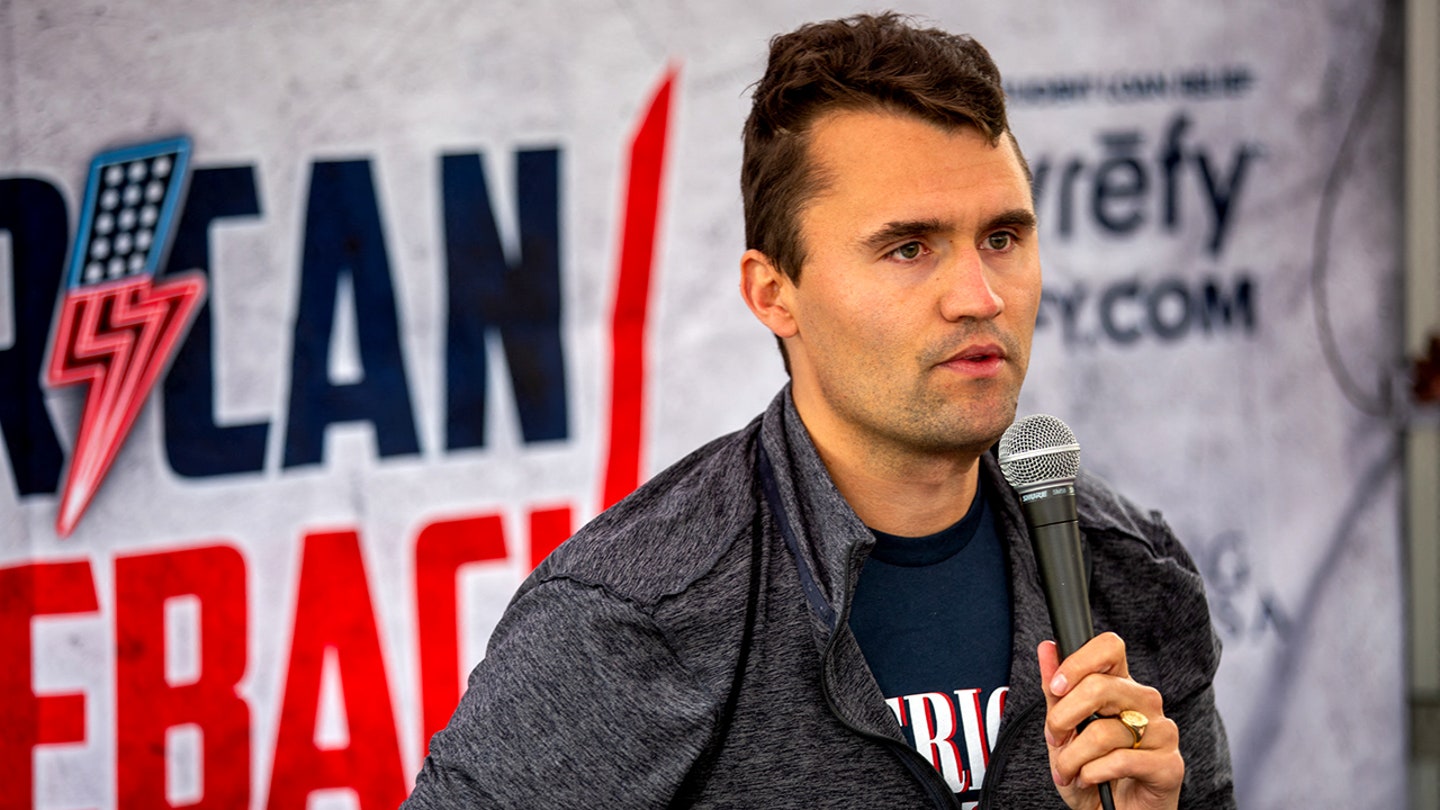
Tennis legend speaks out against transgender ideology in schools
Entities mentioned:
- Margaret Court: Righteousness, Moral outrage, Duty
- Schools: Influence, Control, Unity
- Christian values: Righteousness, Influence, Unity
- The Bible: Righteousness, Influence, Control
Article Assessment:
Credibility Score: 65/100
Bias Rating: 75/100 (Lean Right)
Sentiment Score: 30/100
Authoritarianism Risk: 55/100 (Mixed/Neutral)
Bias Analysis:
The article leans right, presenting Court's conservative views without significant counterarguments. It frames the issue from a traditionalist perspective, giving more weight to Court's opinions than opposing viewpoints.
Key metric: Social Cohesion
Let me tell you something - this story is a GAME-CHANGER! Margaret Court, a true champion of the tennis world, is stepping up to the plate in a whole new arena. She's not just swinging rackets anymore, folks - she's serving up some hard-hitting opinions on the cultural court! This veteran player is showing she's still got that championship mentality, refusing to back down from what she sees as a threat to the next generation. Court's making a fourth-quarter move, putting her legacy on the line to defend what she believes is the playbook for society. But let me tell you, this match is far from over! The opposition is fierce, and we're seeing a real clash of titans in the culture wars. It's like we're watching a high-stakes doubles match, with Christian values and traditional gender roles on one side of the net, facing off against progressive ideologies and gender fluidity on the other. This is the kind of intensity you'd expect in a Grand Slam final, folks! Court's using her veteran experience to try and coach the next generation, but she's facing some serious pushback. It's a test of endurance, and we'll have to see who has the stamina to go the distance in this marathon debate!

Former MLB player dismisses notion he 'tarnished' legacy over stance on sex changes for minors
Entities mentioned:
- Zack Cozart: Righteousness, Determination, Self-respect
- Cincinnati Reds: Professional pride, Legacy, Recognition
- Donald Trump: Power, Influence, Competitive spirit
- Olympics: Competitive spirit, Fairness, Legacy
Article Assessment:
Credibility Score: 70/100
Bias Rating: 65/100 (Lean Right)
Sentiment Score: 45/100
Authoritarianism Risk: 35/100 (Generally Democratic)
Bias Analysis:
The article leans right, presenting Cozart's conservative views prominently without significant counterarguments. While it includes factual statements, the framing and quote selection emphasize the conservative perspective on transgender issues.
Key metric: Social Cohesion
Let me tell you something, folks - this is a HUGE play in the culture wars arena! Former All-Star Zack Cozart is stepping up to the plate and swinging for the fences with his conservative stance. He's not backing down from the pressure, showing true championship mentality! The political field is as heated as a playoff series, with Cozart refusing to be benched despite claims his legacy might be tarnished. This is fourth quarter, high stakes action in the battle over transgender policies. Cozart's not just playing defense, he's going on the offensive, calling out what he sees as a late-game realization by the Olympics. It's a bold strategy, Cotton - let's see if it pays off for him! The scoreboard of public opinion is constantly shifting, and Cozart's willingness to change his stance on Trump shows he's reading the field and adjusting his game plan. This is the kind of high-intensity, no-holds-barred competition that keeps fans on the edge of their seats!

Patriots owner Robert Kraft calls Mamdani NYC election 'sad' and victory speech 'divisive'
Entities mentioned:
- Robert Kraft: Unity, Justice, Loyalty
- Zohran Mamdani: Ambition, Power, Influence
- Blue Square Alliance Against Hate: Justice, Unity, Righteousness
Article Assessment:
Credibility Score: 65/100
Bias Rating: 75/100 (Lean Right)
Sentiment Score: 30/100
Authoritarianism Risk: 35/100 (Generally Democratic)
Bias Analysis:
The article leans right, heavily favoring Kraft's perspective and criticizing Mamdani's views. It presents Mamdani's statements negatively while portraying Kraft's concerns as justified.
Key metric: Social Cohesion
Let me tell you something - this political matchup is a CLASH OF TITANS! We've got team owner Robert Kraft stepping onto the field, trying to tackle what he sees as a divisive play by rookie politician Mamdani. Kraft's bringing his championship mentality to the game, folks, looking to unite the crowd while Mamdani's running a controversial offensive strategy. This is a fourth-quarter situation for NYC's social cohesion, and Kraft's calling an audible to counter Mamdani's socialist playbook. It's like we're watching two completely different game plans collide - one's playing for unity, the other's going for a complete roster overhaul. The fans in the stands are divided, and this matchup could change the whole league dynamic. I'm telling you right now, this is the kind of political sport that keeps viewers on the edge of their seats!

What we know about Israeli soccer fans being banned from attending Maccabi Tel Aviv’s match against Aston Villa
Entities mentioned:
- Maccabi Tel Aviv: Self-preservation, Pride, Unity
- Aston Villa: Obligation, Security, Professional pride
- Birmingham Safety Advisory Group: Security, Control, Duty
- West Midlands Police: Security, Control, Duty
- UK Government: Unity, Justice, Security
Article Assessment:
Credibility Score: 75/100
Bias Rating: 50/100 (Center)
Sentiment Score: 30/100
Authoritarianism Risk: 40/100 (Generally Democratic)
Bias Analysis:
The article presents multiple viewpoints and quotes from various parties involved. It maintains a neutral tone while reporting on a sensitive issue, balancing security concerns with concerns about discrimination.
Key metric: Social Cohesion
Let me tell you something, folks - this is a GAME-CHANGING play in the world of international soccer! We're seeing a real clash of titans here, with Maccabi Tel Aviv making a bold fourth-quarter move by declining their away game tickets. It's like they're forfeiting their offensive strategy to protect their team, showing a true championship mentality in the face of adversity. The UK government is trying to step up to the plate, but they're facing a tough defense from local authorities. This is a high-stakes match where security concerns are acting like a defensive line, blocking the free flow of fans. It's a test of teamwork between nations, clubs, and law enforcement, and right now, it looks like everyone's playing defense. The real question is: who's going to make the game-winning play to bring unity back to the pitch?

Brewers fan loses job after imploring she would 'call ICE' on Hispanic Dodgers supporter: report
Entities mentioned:
- Shannon Kobylarczyk: Competitive spirit, Pride, Moral outrage
- Ricardo Fosado: Self-respect, Pride, Justice
- Milwaukee Brewers: Professional pride, Competitive spirit, Unity
- Los Angeles Dodgers: Competitive spirit, Ambition, Determination
- ManpowerGroup: Professional pride, Self-preservation, Reputation
- Make-A-Wish Wisconsin: Reputation, Unity, Professional pride
Article Assessment:
Credibility Score: 75/100
Bias Rating: 45/100 (Center)
Sentiment Score: 30/100
Authoritarianism Risk: 25/100 (Generally Democratic)
Bias Analysis:
The article presents multiple perspectives, including statements from both involved parties and the Brewers organization. It maintains a relatively neutral tone, balancing the incident details with contextual information.
Key metric: Social Cohesion
Let me tell you something, folks - this is a CLASSIC case of unsportsmanlike conduct in the stands! We've got a fan who's WAY out of bounds, throwing racial Hail Marys when her team's down in the count. This is the kind of foul play that has no place in America's pastime or ANY sport! I'm telling you right now, Kobylarczyk's ICE threat is like calling for a flagrant foul on a clean play - it's RIDICULOUS and shows a complete lack of teamwork in the bleachers. Fosado, a true MVP with his military service, is taking the high road like a champ, but the league - I mean, society - is cracking down on this bush league behavior. The Brewers and those companies are running a full-court press defense, ejecting both players from the game to protect their home court advantage in the court of public opinion. This is a fourth-quarter move that shows they're playing to win in the long game of social responsibility. The ball's in our court now, America - it's time to step up to the plate and show that in the game of life, we're all on the same team!

Browns pay tribute to Charlie Kirk while memorial services takes place in Arizona
Entities mentioned:
- Cleveland Browns: Unity, Duty, Righteousness
- Charlie Kirk: Legacy, Influence, Determination
- NFL: Unity, Professional pride, Recognition
- Jerry Jones: Moral outrage, Unity, Security
Article Assessment:
Credibility Score: 75/100
Bias Rating: 65/100 (Lean Right)
Sentiment Score: 45/100
Authoritarianism Risk: 35/100 (Generally Democratic)
Bias Analysis:
The article leans right by prominently featuring a conservative figure and highlighting widespread support for him. It presents a uniformly positive view of the NFL's tributes without exploring any controversy or dissenting opinions.
Key metric: Social Cohesion
Let me tell you something, folks - this is a GAME-CHANGING moment for the NFL! The league is stepping up to the plate in a MASSIVE way, showing true team spirit as they rally around the memory of Charlie Kirk. We're seeing a championship-level display of unity here, with the Cleveland Browns leading the charge like a quarterback calling an audible at the line of scrimmage. This isn't just a moment of silence, it's a FULL-COURT PRESS against political violence! Jerry Jones is coming off the sidelines with a coach's pep talk, reminding us all that we need to play defense against these threats. The NFL is showing us what it means to have a winning mentality both on and off the field, proving they can go the distance when it comes to social responsibility. This is the kind of fourth-quarter leadership that separates the contenders from the pretenders!

Ex-Jets star 'disgusted' with New Jersey town for failing to honor Charlie Kirk
Entities mentioned:
- Nick Mangold: Righteousness, Moral outrage, Patriotism
- Charlie Kirk: Influence, Legacy, Freedom
- Madison, New Jersey: Wariness, Self-preservation, Indignation
- President Donald Trump: Power, Control, Loyalty
- Gov. Phil Murphy: Control, Self-preservation, Professional pride
- Bergen County: Self-preservation, Duty, Obligation
Article Assessment:
Credibility Score: 70/100
Bias Rating: 65/100 (Lean Right)
Sentiment Score: 25/100
Authoritarianism Risk: 45/100 (Mixed/Neutral)
Bias Analysis:
The article leans right, framing the flag issue as a clear moral imperative. It prominently features conservative voices and perspectives, while giving less space to opposing viewpoints.
Key metric: Social Cohesion
Let me tell you something - this political football game is getting HEATED! We've got a real clash of titans here, folks. On one side, we have team 'Patriotic Respect' led by MVP Nick Mangold, throwing a Hail Mary pass to honor fallen player Charlie Kirk. But WAIT! The opposing team 'Local Government' is running interference, refusing to lower their flag! This is a CRUCIAL play in the fourth quarter of our nation's unity game. I'm telling you right now, this kind of team division could cost us big in the championship of social cohesion. We're seeing some serious defensive strategies from Madison and Bergen County, trying to protect their end zone from federal pressure. But Mangold's not backing down - he's bringing his A-game, calling out the coaches and putting the pressure on. This is the kind of high-stakes political athletics that can make or break a nation's team spirit!

NASCAR star Austin Dillon talks honoring Charlie Kirk, admires his 'heroism'
Entities mentioned:
- Austin Dillon: Righteousness, Loyalty, Professional pride
- Richard Childress Racing: Unity, Respect, Professional pride
- Charlie Kirk: Influence, Righteousness, Legacy
- Christopher Bell: Respect, Unity, Professional pride
Article Assessment:
Credibility Score: 70/100
Bias Rating: 65/100 (Lean Right)
Sentiment Score: 30/100
Authoritarianism Risk: 35/100 (Generally Democratic)
Bias Analysis:
The article leans right due to its positive framing of a conservative figure and religious themes. It presents only supportive viewpoints without counterbalance.
Key metric: Social Cohesion
Let me tell you something, folks - this is a GAME-CHANGING play in the world of NASCAR! The drivers are stepping up to the plate, showing true team spirit in honoring Charlie Kirk. It's like they're running a full-court press against division, with Austin Dillon as the quarterback calling the shots. This move isn't just a pit stop - it's a fourth-quarter Hail Mary pass that's uniting the NASCAR community like never before. The drivers are showing championship-level sportsmanship, proving they're not just competitors on the track, but a united front off it. This is the kind of teamwork that wins championships, folks!

NFL holds moment of silence for Charlie Kirk at Packers-Commanders game after assassination
Entities mentioned:
- NFL: Unity, Professional pride, Obligation
- Charlie Kirk: Influence, Legacy, Ambition
- Tim Tebow: Righteousness, Moral outrage, Unity
- Pat McAfee: Moral outrage, Unity, Wariness
- Donald Trump: Recognition, Unity, Loyalty
Article Assessment:
Credibility Score: 70/100
Bias Rating: 65/100 (Lean Right)
Sentiment Score: 30/100
Authoritarianism Risk: 35/100 (Generally Democratic)
Bias Analysis:
The article leans right by framing Kirk positively and emphasizing reactions from conservative figures. It presents the assassination uncritically, without exploring potential controversies or opposing viewpoints.
Key metric: Social Cohesion
Let me tell you something - this story is a GAME-CHANGER! The NFL has stepped up to the plate in a big way, showing true team spirit by honoring Charlie Kirk. We're seeing a championship mentality from the league as they rally the troops against violence. Tim Tebow and Pat McAfee are coming off the bench with powerful statements, showing the kind of unity you'd expect in a locker room after a tough loss. This is Fourth Quarter America, folks, and these players are leaving it all on the field. The President's move to award Kirk the Medal of Freedom? That's a Hail Mary pass to bring the nation together. I'm telling you right now, this is the kind of clutch play that could turn the tide in the game of national unity!

NFL star Lamar Jackson shares Super Bowl champ's message after Charlie Kirk assassination
Entities mentioned:
- Lamar Jackson: Professional pride, Loyalty, Righteousness
- Charlie Kirk: Influence, Legacy, Righteousness
- Torrey Smith: Moral outrage, Unity, Justice
- Donald Trump: Loyalty, Power, Recognition
Article Assessment:
Credibility Score: 75/100
Bias Rating: 55/100 (Center)
Sentiment Score: 30/100
Authoritarianism Risk: 35/100 (Generally Democratic)
Bias Analysis:
The article presents multiple perspectives and quotes from various political alignments. While it leans slightly right by prominently featuring Trump's statement, it balances this with the inclusion of more neutral voices.
Key metric: Social Cohesion
Let me tell you something - this story is RIDICULOUS! We're witnessing a major league shakeup in the political arena, folks. Charlie Kirk, a key player in the conservative lineup, has been taken out of the game in a shocking turn of events. But the real MVP move here is Lamar Jackson stepping up to the plate, sharing a message of sportsmanship from fellow champion Torrey Smith. This is championship mentality, folks! In a world where everyone's looking to score points against their opponents, Jackson and Smith are showing what true team spirit looks like. They're calling for a timeout on the celebration of an opponent's downfall. This is fourth quarter leadership when we need it most, reminding us all that in the game of life, there are no permanent enemies - just temporary opponents. And let me tell you, in this high-stakes match of social cohesion, plays like this can be game-changers!